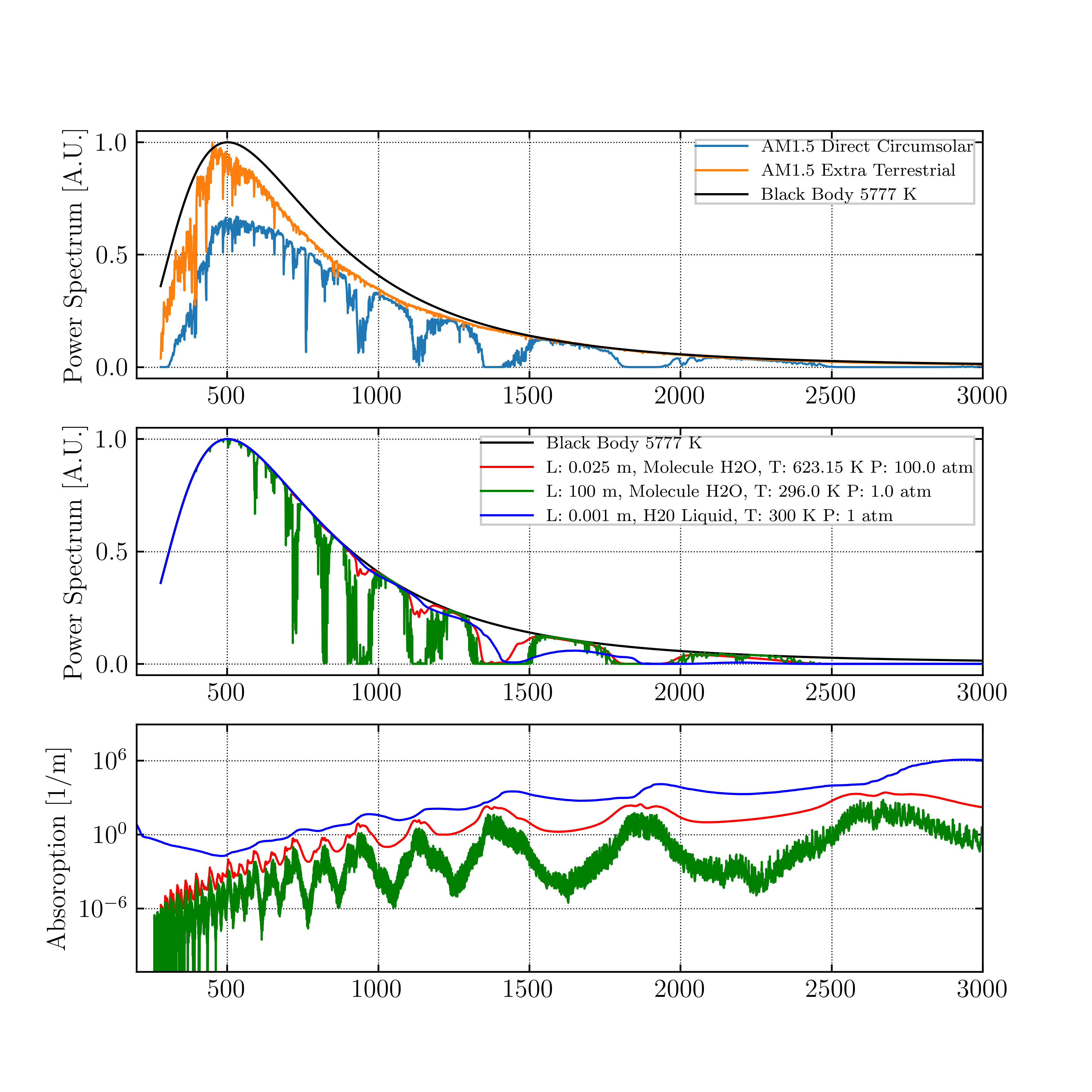
Artificial Atmospheric Absorption for Spectrum Generation
The solar spectrum shows up at Earth looking pretty close to a black body of 5777 K. As it goes through the Earth's atmosphere, there are various absorption and scattering interactions that change the spectrum to produce some distinct lines and features. I was curious how I might recreate the solar spectrum as measured on the surface of the Earth if I had a beam of light from a warm blackbody of the same temperature as the Sun.
Water filters can do the trick for many of the features above 500 nm, but I found out that it takes many meters of water vapor to get the spectral features, and that liquid water has quite a different absorption coefficient than water vapor. One trick could be to pressurize the water and increase the temperature to increase the density of the vapor. In this way, the length required is manageable. Potentially only a rather thin medium is needed if we tune the pressure and temperature and fluid quality within engineering constraints for pressurized transparent vessels. We might also be able to add some other constituents to get other features in the spectrum.
Below, the top plot shows a blackbody and the solar spectrum as measured in space and on the surface of the Earth. The third plot shows the absorption coefficients for the different filters. The second plot applies those filters to a blackbody for a particular filter length.

For those curious, spectral absorption data like this can be found here: